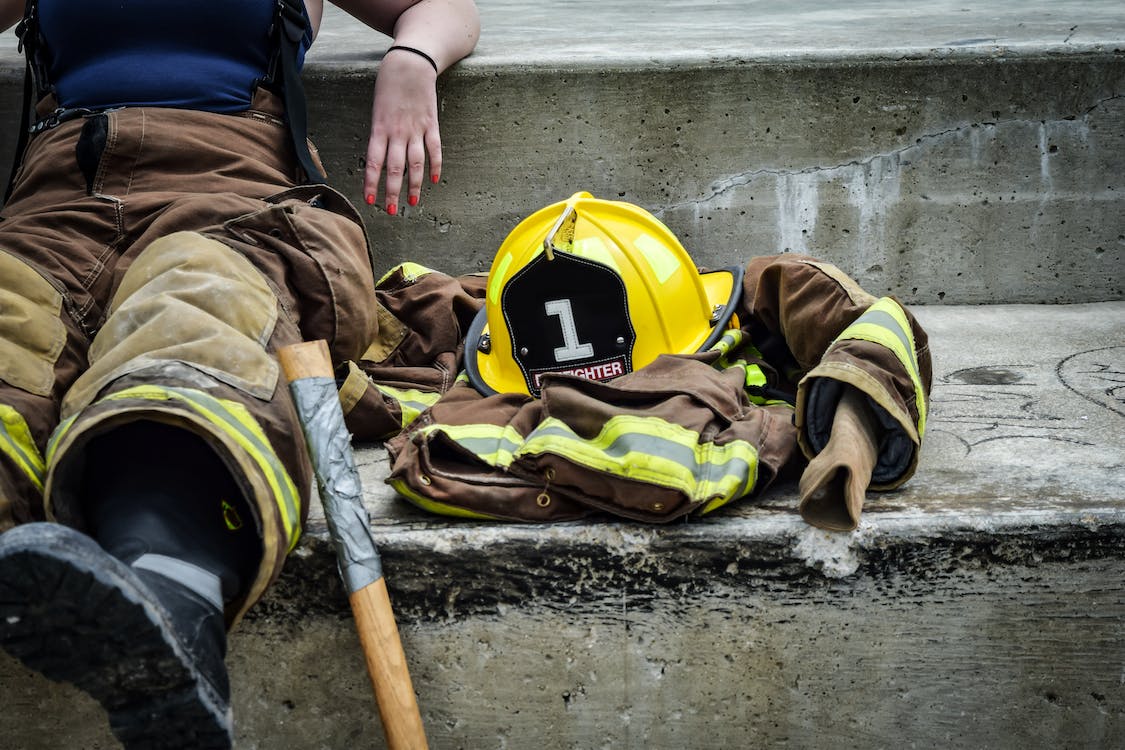General
From Hero to Victim: The Harmful Effects of AFFF Firefighting Foam

Firefighters are commonly seen as heroic individuals who put their lives on the line to rescue others during emergencies. However, these brave men and women may face a hidden danger in the form of Aqueous Film-Forming Foam (AFFF) Firefighting Foam. AFFF is a chemical foam used to extinguish fires, particularly those involving petroleum products.
While effective at suppressing flames, AFFF contains toxic chemicals linked to a range of health issues, including cancer. Firefighters, military personnel, and other individuals who have been exposed to AFFF are now grappling with the devastating effects of this foam.
This article will delve into the adverse consequences of AFFF Firefighting Foam and its impact on those who are typically regarded as heroes, turning them into victims.
What Exactly Is AFFF Firefighting Foam, and How Is It Used?
AFFF Firefighting Foam is a type of foam made of chemicals that is utilized by emergency responders and firefighters to suppress fires. AFFF contains a mixture of fluorinated surfactants and other chemicals that are highly effective at suppressing flames, particularly those involving flammable liquids like gasoline, oil, and jet fuel. The foam forms a blanket over the fuel, preventing oxygen from reaching the fire and smothering it.
Despite its effectiveness, AFFF has come under scrutiny in recent years due to the health risks associated with exposure to its toxic chemicals. In fact, according to a report by the Environmental Working Group, as of 2022, at least 2,858 locations across the United States are known to have contaminated drinking water with per- and poly-fluoroalkyl substances (PFAS), chemicals that are found in AFFF.
These chemicals are known to accumulate in the body over time and have been associated with a number of health issues, such as cancer, thyroid disease, and reproductive and developmental issues.
AFFF is commonly used in a variety of settings, including airports, military installations, and industrial sites. In airports, it is used to quickly extinguish fires that may occur during the refueling of planes. In military settings, it is used for training exercises and to extinguish fuel fires caused by enemy attacks.
In industrial settings, it is used to protect facilities that handle large quantities of flammable liquids, such as refineries and chemical plants. While AFFF has been effective at preventing large-scale fires, its use has also led to the widespread contamination of soil and water sources in many areas.
The Toxic Chemicals in AFFF Firefighting Foam and Their Effects on Health
AFFF comprises per- and poly-fluoroalkyl substances (PFAS), which are persistent and bioaccumulative chemicals that do not degrade in the environment and can amass in the body over time, and exposure to these substances is linked to several health problems, such as cancer, developmental issues, and thyroid disease.
Recent studies have also shown that PFAS chemicals can adversely affect the immune system and increase the risk of infectious diseases. Studies have found that individuals with higher levels of PFAS in their blood were more likely to get severe cases of COVID-19.
This is particularly evident in firefighters and other emergency responders who have been exposed to AFFF on a regular basis, as their immune systems may already be compromised due to their exposure to PFAS chemicals.
The long-term health effects of AFFF exposure are still being studied, but it is clear that this foam has put many individuals at risk of serious health problems beyond cancer. The health effects of PFAS exposure can take years or even decades to appear, which is why many firefighters and military personnel are only now beginning to experience symptoms related to their exposure to AFFF.
The long-term health effects of AFFF exposure are still not fully understood, but it is clear that the use of this foam has put many individuals at risk of serious health problems.
The Link Between AFFF Firefighting Foam and Cancer: Understanding the Science
AFFF firefighting foam contains PFAS chemicals that are known to be carcinogenic. The use of PFAS chemicals in AFFF firefighting foam has been linked to different types of cancer, such as prostate cancer and kidney cancer. Firefighters and other individuals who have been exposed to AFFF on a regular basis are at an increased risk of developing these cancers.
According to a study published in the Journal of Occupational and Environmental Hygiene in 2022, firefighters use AFFF to suppress flammable liquid fires. The use of AFFF by firefighters can increase the levels of PFAS chemicals in their blood and contaminate ground and surface water, affecting the general population.
Studies published in ScienceDirect in March 2023 found that firefighters who had used AFFF foam had a higher risk of developing different cancers than firefighters who had not used the foam. These findings indicate a definite connection between exposure to AFFF and cancer.
The science behind the link between AFFF firefighting foam and cancer is complex, but it is clear that the PFAS chemicals in the foam are a major contributing factor. Over time, these chemicals can build up in the body and cause harm to DNA, potentially resulting in the onset of cancer.
Understanding the science behind this link is important for developing strategies to prevent exposure to AFFF and minimize the risk of cancer among firefighters and other individuals who may come into contact with this foam.
The Impact of AFFF Firefighting Foam on Firefighters
Workers who have used AFFF, including firefighters and military personnel, are more likely to suffer from health problems due to their exposure to PFAS chemicals found in the foam.
Studies have shown that these chemicals can affect the liver, kidneys, and immune system, as well as increase the risk of cancer and other health problems. This has led to concerns about the long-term health effects of AFFF exposure for firefighters and other workers. Due to high awareness of the potential health hazards of these chemicals, many official agencies have started to take crucial steps to mitigate the risks among firefighters.
For instance, officials at the Department of Defense (DoD) have been working to identify individuals that are exposed to PFAS chemicals at DoD installations and inform them about the associated health and safety risks.
This includes identifying sources of water that contain PFAS and providing relevant health information to medical treatment facilities for military personnel. The DoD has also developed a plan to conduct PFAS blood testing for DoD firefighters by the fiscal year 2021, as mandated by the 2022 National Defense Authorization Act.
As a result of the health risks associated with AFFF exposure, there have been numerous lawsuits filed by firefighters, military personnel, and other workers against AFFF manufacturers. This Firefighting foam lawsuit alleges that the manufacturers knew about the risks associated with their products but failed to warn consumers or take adequate steps to protect them from harm.
Summing Up
AFFF firefighting foam has been a crucial tool for firefighters and other emergency responders to combat fires and prevent disasters. However, the harmful effects of the toxic chemicals in AFFF have been linked to various health issues, including cancer, and have affected numerous individuals, including firefighters, military personnel, and other workers.
It is thus essential for all stakeholders to recognize these hazards and implement necessary actions to reduce them. From ensuring proper training and handling of AFFF to promoting the use of safer alternatives, there are many ways we can work towards a safer and healthier future for all.
If you’re eager to dive into the intriguing world of challenge coins, you’ve come to the right place! Challenge coins are not just collectibles; they hold rich histories and traditions. These small, custom-made tokens have been used for decades to honor military service, boost team camaraderie, and commemorate special events. To learn more about challenge coins, explore their origins, designs, and significance, you’ll uncover a fascinating subculture that extends far beyond their small, metallic surfaces.
The ongoing firefighting foam lawsuit highlights the severity of the issue and the need for urgent action to prevent further harm.





















































